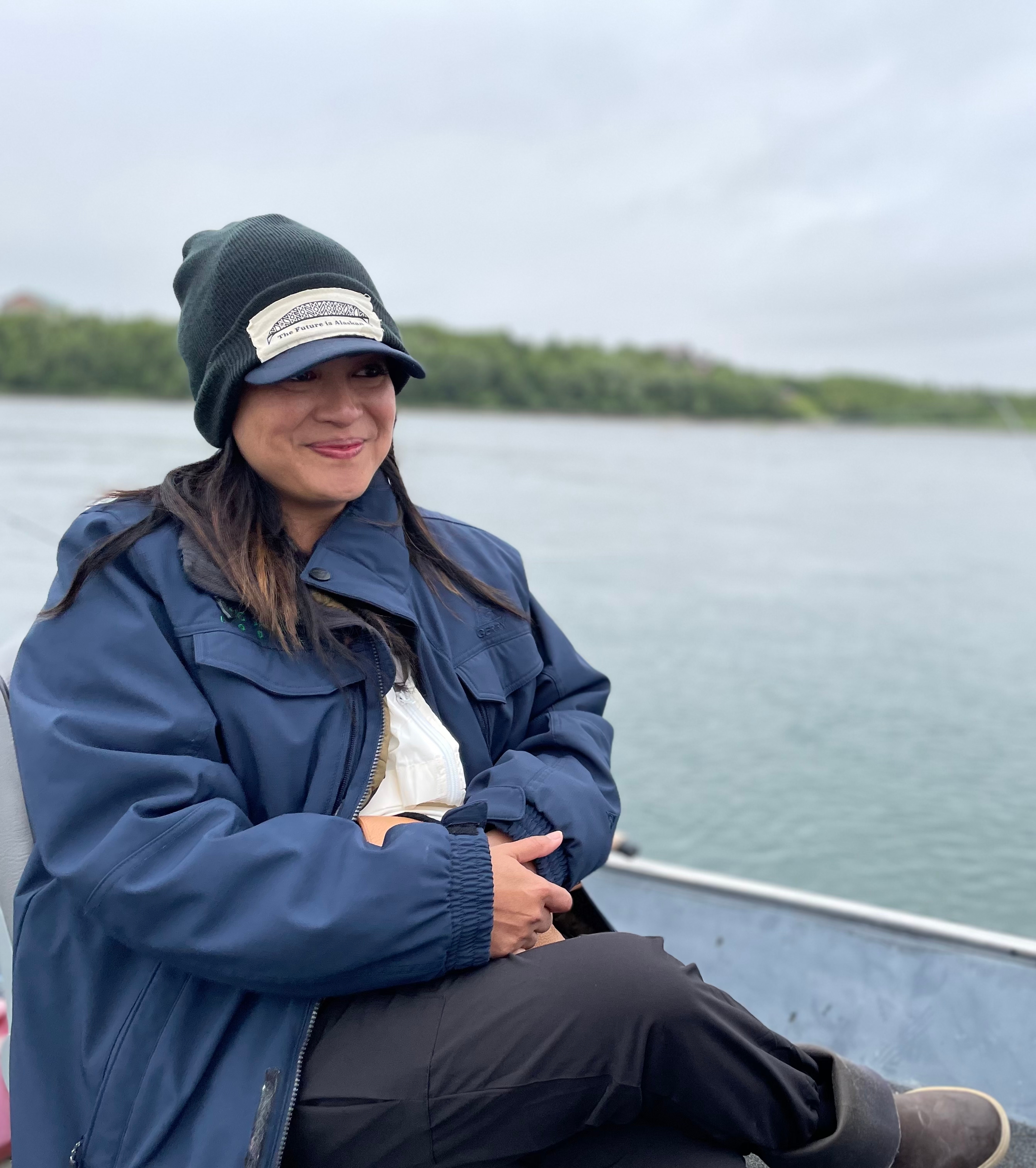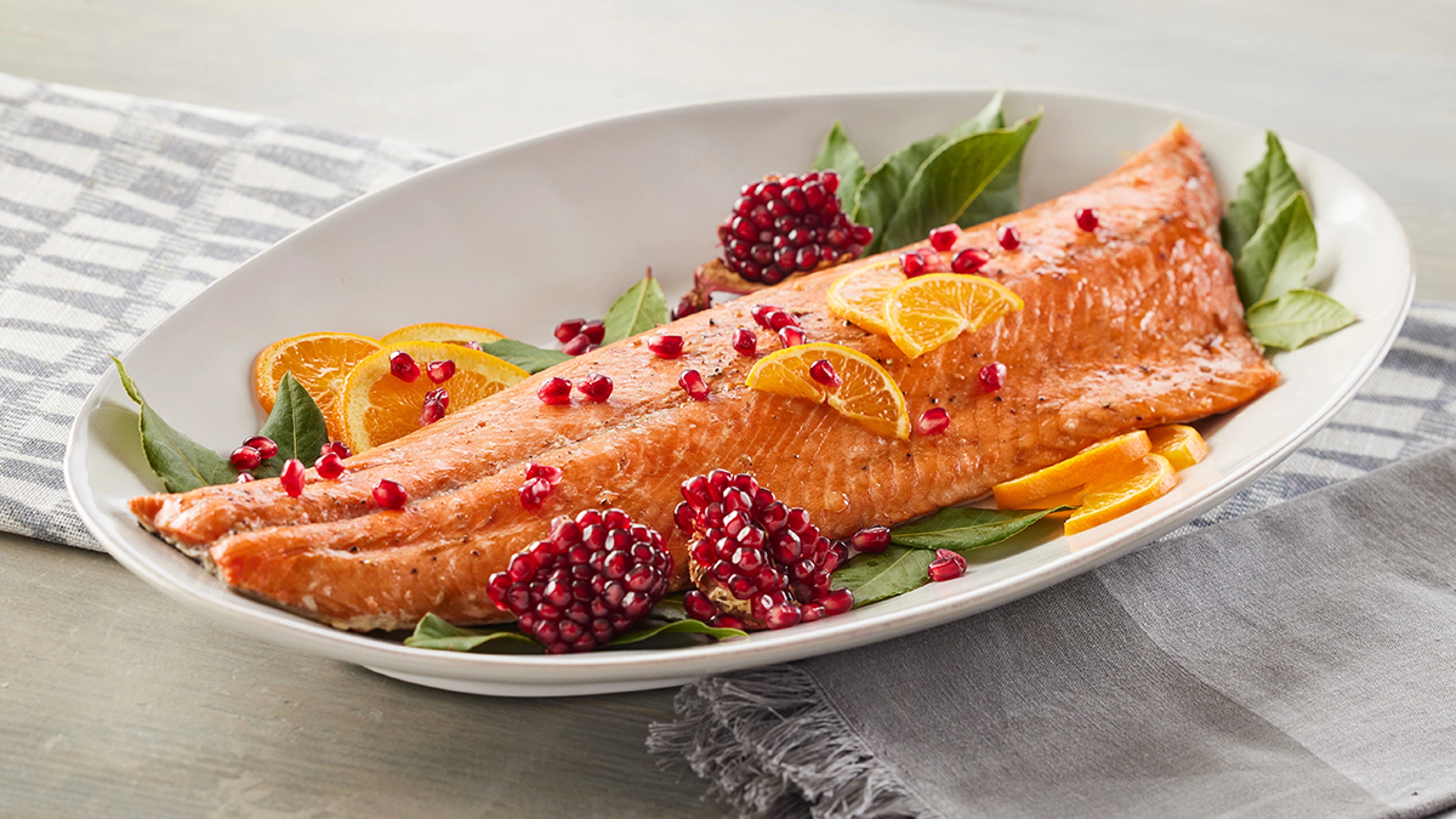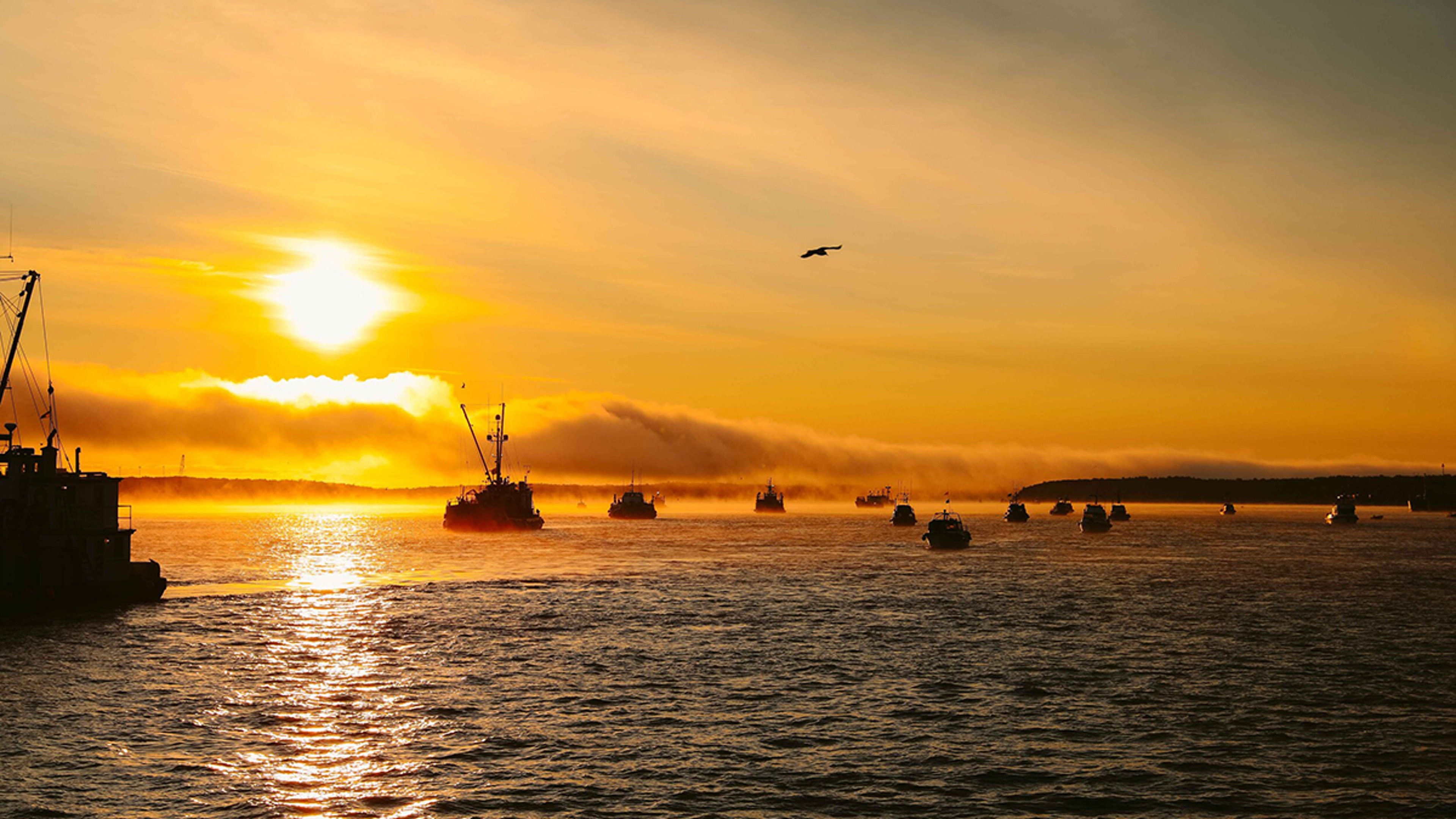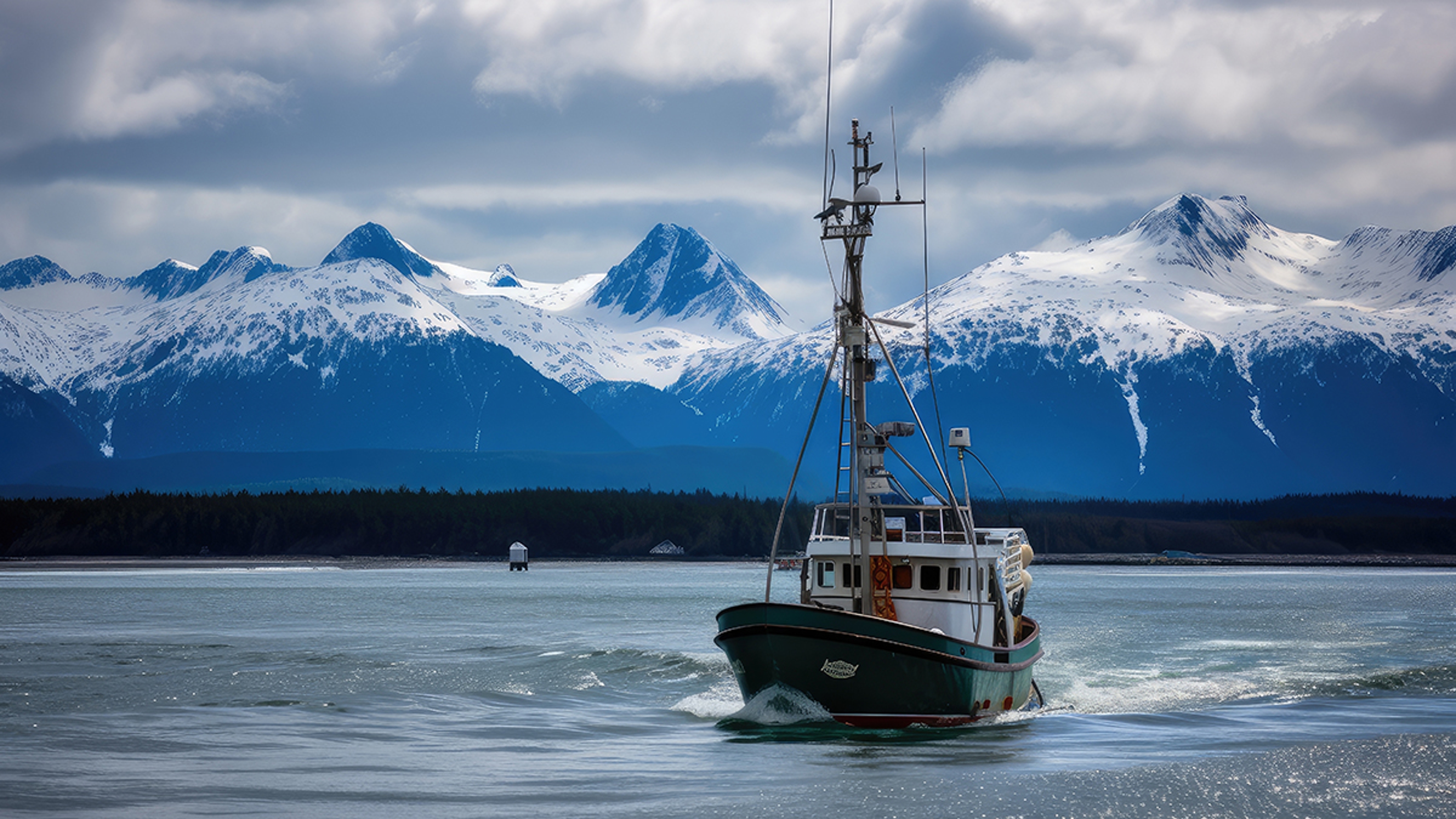July's Featured Catch: Sockeye Salmon From Bristol Bay
Ruby red and super-nutritious, wild sockeye salmon comes from a “magical place.”
Jun 24, 2024
Make a list of the pros and cons of eating wild sockeye salmon from Bristol Bay, Alaska, and it’s going to be very lopsided. A flavorful, meaty seafood, it is also sustainably fished, available frozen or canned, and filled with nutrients, offering health benefits such as lowering bad cholesterol and preventing heart diseases.
Even the pickiest eaters will have a hard time finding flaws in Bristol Bay wild sockeye, which has a firm texture and a clean, satisfying taste — an experience similar to biting into a piece of grass-fed beef or organic chicken. So what’s not to like about sockeye?
“It really is a perfect product,” says Lilani Dunn, executive director of the Bristol Bay Regional Seafood Development Association (or BBRSDA if you prefer acronyms). “Sockeye is pure protein,” she adds, noting that it checks all the boxes for consumers who care about the environment, their health, and who want delicious, nutritious food.

Here’s a sock full of salmon facts
If sockeye is so great, you may be asking, why isn’t it more well-known?
For one thing, the name is a bit of a head-scratcher. With its ruby color, it might be more apt to call sockeye by its nickname, red salmon, though its more familiar tag carries an interesting story. According to National Geographic, “sockeye” is the result of a misguided attempt to translate the word “suk-kegh” — or “red fish” — from the Coast Salish language spoken by people indigenous to British Columbia.
Bristol Bay sockeye is “the largest wild salmon fishery in the world,” Dunn says, yet many Americans may have trouble differentiating it from other types of wild salmon, such as king (aka Chinook) salmon, or coho. King, which is beloved especially for its short-season Copper River variety, is buttery with a slightly firmer flesh, while Coho is semi-firm and milder in flavor than either King or sockeye.

Another factor may be that sockeye is not a farmed species and is almost entirely sourced from its native habitats in the northern Pacific, from northern Oregon to above the Arctic Circle in Alaska, and west to Japan and Siberia. Therefore, sockeye may not have always been as prevalent in grocery stores as it is today.
READ MORE: Facts About Sockeye Salmon
Bristol Bay sockeye, which has a very short season of six to eight weeks, is locally processed, says Dunn, and shipped from Alaska mostly frozen, with some canned and smoked. For many years, much of Alaska’s sockeye was exported to Japan and other countries, in part due to demand from overseas. A variety of factors have led to an increasing domestic audience for Bristol Bay’s salmon, including a changing American diet that prizes the seafood’s nutritional benefits, as well as economic factors such as the strong U.S. dollar, which has given fisheries in other markets an edge in terms of price.
A meal plan for that fillet or can
Sockeye fillets or canned sockeye offer a wide range of uses, from the central protein of a gourmet meal to a quick protein fix. “I know some elite athletes who pop open a can and eat it,” Dunn says, adding that it’s a popular option for campers and hikers.
The nutritional value of sockeye is well-documented. Omega-3 fatty acids, which the human body doesn’t produce enough of on its own, are anti-inflammatory and improve brain function. The antioxidant astaxanthin, which gives salmon its distinct orange / pink coloring, may reduce blood pressure and the risk of hypertension.

All of this and more makes Bristol Bay sockeye one of the healthiest proteins you can consume, and yet its flavor and versatility are even stronger selling points.
Cooking a sockeye salmon fillet is easy — here’s a guide to 10 recipes for some ideas, and Bristol Bay sockeye has a helpful cooking guide here — whether pan-roasting, baking, broiling, or even cooking on a grill on a plank.
Dunn says she’s a purist when it comes to cooking sockeye, sticking to just salt, pepper, and garlic or garlic powder, and searing it. She also advises using the skin to get the most nutrients and antioxidants out of the fish.
Asked about wine pairings, Dunn enthusiastically endorses Pacific Northwest pinot noir for those who prefer a light red to complement their salmon, and she says that, while perhaps an untrendy choice, she enjoys chardonnay for a white option.
READ MORE: Pairing Wine With Fish & Seafood
Of course, one of the appeals of sockeye is its rich flavor and meaty texture when canned, which lends itself to even more culinary experimentation. It’s easily made into a salmon salad or added to breadcrumbs and spices for fishcakes, and Dunn says she enjoys clever uses of canned sockeye in globally inspired dishes such as Filipino lumpia — fried spring rolls with salmon subbed in for the usual pork, along with garlic, carrots, and onion — or mixed with vermicelli noodles in Vietnamese fresh spring rolls.

Lessons in sustainability
One of the few potential cons of consuming wild sockeye salmon, to return to our earlier premise, used to be concerns about fish population. However, sustainability measures by the Alaska Department of Fish and Game and other organizations ensure that salmon runs are managed efficiently.
The forecast for 2024, for example, is predicted as “expected” by Alaska Fish and Game, with 39 million sockeye salmon returning to Bristol Bay. Dunn notes that the run broke records in 2022, and that Bristol Bay’s, along with Prince William Sound’s pristine waters and environment continue to make for a welcoming habitat for sockeye. Even with the somewhat reduced forecast for 2024, she says, “It's still hovering around 40 million, which is huge.”
Dunn adds that she’s seen Alaska Fish and Game’s monitoring system firsthand in Bristol Bay, likening it to the tech crew of a Broadway show, with announcements directing fishing crews about when the fishing is open or if there’s a stop. Fishermen are given ample time to prepare for either and given transparent explanations for why and when there would be a closure.
It’s no small feat: Dunn says that her organization oversees 1,800 permit holders, with crews representing nearly all 50 states, (they’re still waiting on someone from Delaware) as fishermen come to Alaska in June for sockeye season. Boats as long as 32 feet set out during the short season, fishing the bay and its nine river systems. Dunn marvels at the scope of it — 40 million fish in two months — saying, “That much fish harvested in such a short time. It’s wild, no pun intended.”

Life on the bay
The experience working in the fishing industry as what her Alaskan colleagues call a “Seattle suit” has been wild as well for Dunn. She admits that being a woman executive in the male-dominated fishing industry has been challenging at times, but she spent a lot of time listening and learning. Now that she’s ascended to an executive directorrole, Dunn accepted a sort of challenge to experience the fishing season firsthand; the 2024 Sockeye run will be her first aboard a vessel.
She says she loves the pristine beauty of Bristol Bay, although past trips have taught her that summers can offer vastly different experiences. “I’ve been in shorts and a tank top, sweating as if I was on a Hawaiian vacation, and I’ve been bundled up and the most cold I’ve ever been, all within the same season.”
Besides the stunning landscapes, Dunn says she’s equally impressed by Bristol Bay’s residents and its native Alaskan population of subsistence salmon harvesters. “They are truly salmon people,” she says. She also praises the production operation that gets sockeye from Alaska to companies that market and sell the fish (North Pacific Seafoods and Leader Creek Fisheries are two that help get sockeye into the hands of Vital Choice customers).
The people, the bodies of water, the remarkable fish that swim upstream and out into the bay for two years before returning to spawn again — all part of what Dunn calls a “magical place.” A place that produces some of the healthiest, most delicious seafood on the planet, Bristol Bay.







